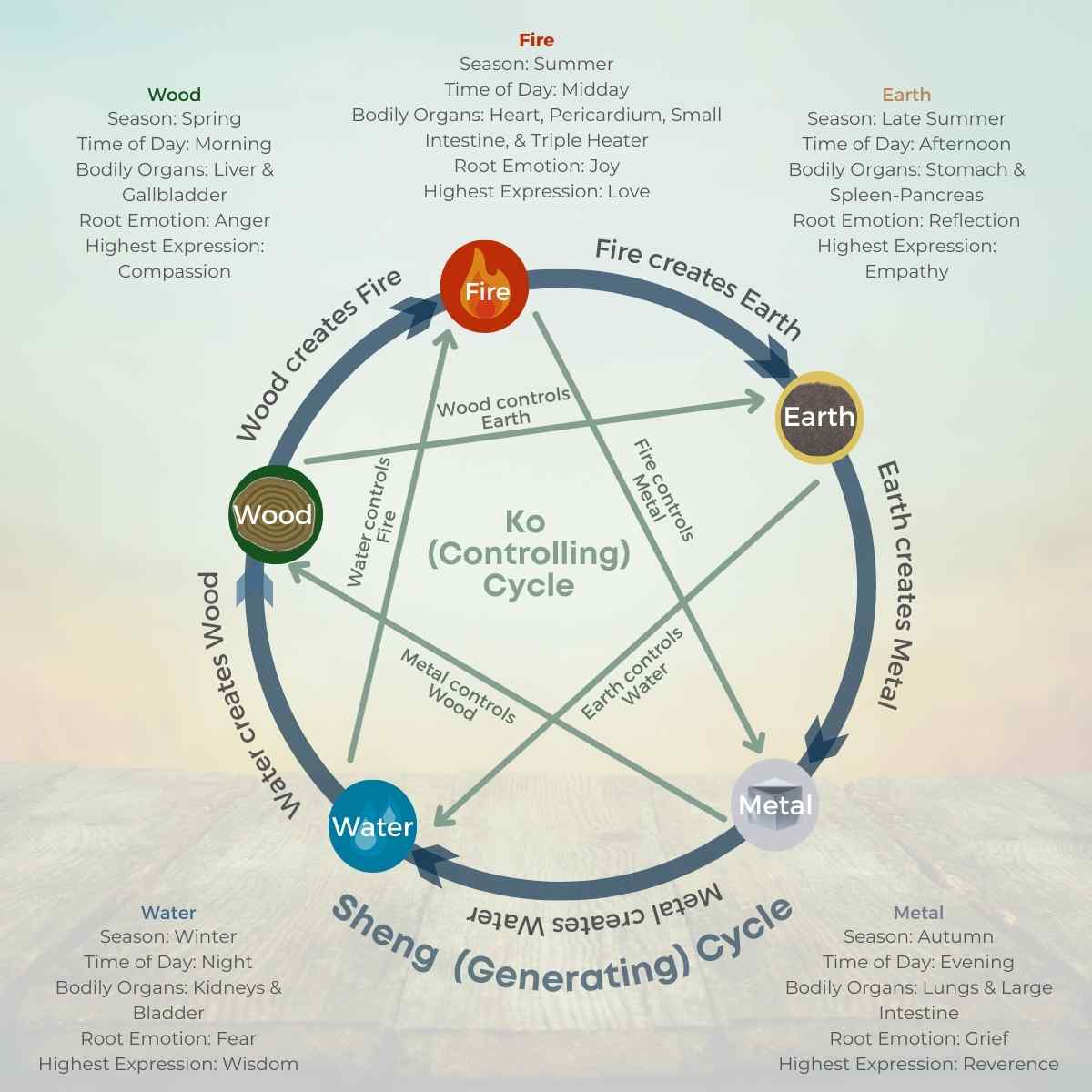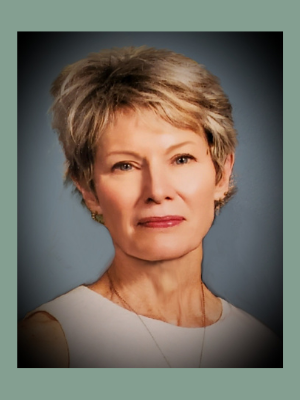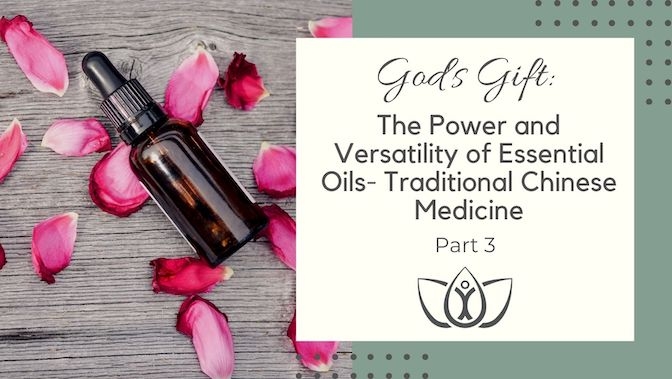God’s Gift: The Power and Versatility of Essential Oils
Part 3: Traditional Chinese Medicine and Essential Oils
This blog post was written by Victoria L. Freeman, Ph.D., CHFS, CMH.
We’ve arrived at the third and final blog of this series. So far, we’ve explored the remarkable influence essential oils (EOs) can exert on our health and well-being. Hopefully, you’ve enjoyed the journey, and by the end of this segment, we anticipate that you will have gained an appreciation of the myriad ways holistic health practitioners can incorporate essential oils into their client care.
In Part 1, we investigated the history of essential oils, some usage and safety guidelines, and how, from a Western medicine point of view, EOs can support a person with certain chronic health conditions. Part 2 was a venture into Ayurveda and how essential oils can be incorporated into that healthcare system. In this final installment, we’ll examine Traditional Chinese Medicine (TCM) philosophy and how EOs can nurture and balance the Five Elements that are a key component of this comprehensive approach to health.
While all holistic health systems incorporate aspects of mind, body, and spirit, one unique facet of TCM is the underlying principle that not only is the mind involved in the manifestation of health and disease, but “many TCM practitioners believe that all diseases stem first from imbalanced emotions,” explains Lauren Ameling, DC, BCND, Chiropractor, Naturopath, Acupuncturist, and Vice President of Education for Trinity. Due to this viewpoint, throughout our exploration of Traditional Chinese Medicine, you’ll see many references to mental and emotional states.
Traditional Chinese Medicine Overview
TCM is a richly complex holistic system of healthcare that has evolved over thousands of years, being refined along the way by new wisdom and experience. Its basic premise is that a vital life force, known as Qi (or Chi), makes up and binds together all things in the universe. The concept of Qi can be broken down into two main branches. The physical or nourishing part of Qi makes up the air, water, and food that we consume. The other, more intangible part of Qi is the vital fluids and energy that flows through our bodies. The physical or nourishing part of Qi can be thought of as those things we take in to make part of us, while the latter is what has already become part of us and then released to become the cycle of life.4
TCM teaches that imbalances and interruptions (such as stagnation) of flowing Qi force are responsible for disease ailments – physical, mental, or emotional. Imbalanced Qi can result from deficiencies or excesses. Examples of Qi deficiency are lack of sleep, food, shelter, fresh air, clean water, or other things your body needs to function properly, such as mental stimulation or love. Qi excess includes things like stress, overeating, environmental toxins, or strong negative emotions.4
Yin and Yang
Also central to TCM is the belief that two opposing forces shape the world and all of life: Yin and Yang. According to Gabriel Mojay in his book, Aromatherapy for Healing the Spirit: Restoring Emotional and Mental Balance with Essential Oils, “As polar tendencies rather than actual phenomena, Yin and Yang point toward the visible and solid (Yin) and invisible and dynamic (Yang) aspects of the same entity. They cannot exist without each other, nor are they capable of remaining fixed; they signify dynamic tension, interdependence, and change.”2 As with unencumbered Qi, TCM proponents believe that balance between Yin and Yang creates good emotional and physical health.
In their book, Between Heaven and Earth: A Guide to Chinese Medicine, authors Harriet Beinfield, L.Ac. and Efrem Korngold, L.Ac, O.M.D describe the relative and transformational nature of Yin and Yang like this: Think of a Yin-Yang mountain. In the morning, the shady side of the mountain is Yin compared to the sunny side, which is Yang. As the sun rises and shifts in the sky, the warmth and light of morning move to the other slope of the mountain in the afternoon. The sunny and shady sides merge and then alternate. The same is true with Yin and Yang. Shady Yin transforms into sunny Yang and then back again.
Yin refers to the exhibition of Qi energies that are cold, damp, passive, material, solid, heavy, and dark. Those opposing Qi energies that are hot, dry, active, nebulous, aggressive, and light are called Yang. Yin is moon; Yang is sun. Yin is winter; Yang is summer. Yin is night; Yang is day. Yin is female; Yang is male. Yin is form; Yang is function.2
According to Mojay, “in the human body, Yin pertains to anatomical structure – to the cells, tissues, and organs – while Yang relates to the body’s energy, its vital force, and dynamic functioning.”2 He goes on to write that one of the most fundamental energetic divisions in Chinese medicine is between the body’s more nutritive interior (Yin) and more protective exterior (Yang). The vital organs are housed in the Yin interior and supported by the Nutritive-Qi. This is the Qi-energy that circulates throughout all areas of the body via the non-physical pathways called meridians. The body’s Yang exterior includes the skin and muscles and is controlled by the Defensive-Qi. This is the protective energy and is what supports resistance to external pathogenic invaders like bacteria, viruses, and parasites.2
Psychologically, Yang relates to conscious thought and analysis, logic, and inquiry. Yin corresponds to feeling and impression, senses, and emotions. The capacity to express yourself articulately and clearly is Yang; the capacity to be receptive and observant is Yin. Self-confidence is Yang, while inner security is Yin. Assertiveness and goal-oriented aspects of personality are Yang. The ability to yield and adapt is Yin.2
The following diagram is used as an example in Dr. Ameling’s course on TCM.
.png)
Five Elements
If the Yin-Yang model symbolizes the process of creation through the interaction of two polar forces, then the Five Element theory (also known as the Five Phase theory) further differentiates this process into five powers or five stages.1 Forming another pillar of Oriental medicine, “the Five Elements may be understood as five phases or movements of Yin and Yang energy. Rather than being elements in a literal sense, the images of water, wood, fire, earth, and metal represent natural forces that together form a dynamic whole,” writes Mojay.2 The Five Element Theory posits that there are five elements in nature that cycle through the seasons and our organs. These Elements represent energies that succeed each other in a continuous Creation Cycle (from Yin to Yang and back to Yin again). From a TCM perspective, awareness of the cycle and relationships among the Elements is necessary to maintain or create optimal balance in our physical body and our mental and emotional health.
In The Yellow Emperor’s Classic of Medicine, author Maoshing Ni, Ph.D., explains that according to TCM, human life develops according to the normal order of the four seasons.3 That is to say, human life is endowed with the Qi of nature. This perceived relationship between Qi and the cycle of nature’s seasons becomes apparent when examining the theory of the Five Elements.

Water is energy in a condensed Yin phase, reflected by the dormancy of winter and night. While Water signifies a floating state of rest, it contains the potential for growth and regeneration and is associated with the source of life, a procreative force, and the will to survive.2
Water Element balance produces trust in the flow of life. You may feel relaxed, calm, at ease, energetic, powerful, and alive. A strong immune system can also be produced by a balanced Water Element. On the other hand, an inability to give or receive, or difficulty accepting what is, can result from an imbalanced Water Element. Also, when imbalanced, Water may lead to an attempt at controlling situations and emotions in relationships.5
Wood indicates energy in a rising or accelerating Yang phase, like the sense of awakening that comes with spring or morning. In this phase of transformation, the “…latent forces of Water are aroused and given direction,” so Wood is thus associated with movement and evolution.2
A balanced Wood Element yields trust in the process of life and enables taking responsibility for your own life. It can also produce a strong sense of purpose and enough autonomy to set and accomplish goals with energy and stamina. However, an imbalanced Wood Element may lead to extreme self-criticism and a need to manipulate and control situations. A lack of vision and self-control can also stem from a Wood Element imbalance.5
Fire symbolizes energy in its most expansive and radiant form, Yang at its pinnacle, much like summer and midday. Fire capitalizes on Wood’s urge to move and evolve and gives it a reason for being. Fire is associated with conscious awareness and self-identity.2
A strong sense of self-worth and positive self-regard, as well as a strong sense of freedom, results from a balanced Fire Element. An imbalance in Fire can result in a lack of responsibility for yourself and your life.5
Earth is energy in a descending Yin stage, downward toward materialized form. It’s predominantly in late summer/early autumn and the afternoon. Earth takes the ideal innate in Fire and makes it real, instilling concrete thought into consciousness and giving spirit bodily form.2
A balanced Earth Element encourages survival instincts, being grounded, and connection with nature. Earth energy awakens us to our most profound potential and has a strong integrating effect on mind, body, and spirit. An imbalanced Earth Element can result in fear that stems from disconnection - from self, family, or community.5
Metal further refines and defines the formative nature of Earth in a gathering and synthesizing Yin phase. Metal’s season is autumn, and evening its time of day: both periods of submission and contemplation.2
A balanced Metal Element yields a strong sense of structure and boundaries, but the primary function of Metal is to “…connect you with the kinetic experience of touching and being touched.”5 An imbalanced Metal Element can lead to long-term feelings of emotional wounding. Balancing the Metal Element can assist in letting go of difficult emotions such as grief, sadness, despair, depression, or feeling unloved or unlovable.5
We all lean toward one Elemental type (with possible secondary Elements), but there is no questionnaire that identifies an individual’s type. Rather, determining what Element is dominant for you is typically determined through observation and assessment during a TCM consultation, explains Ameling. These in-depth assessment techniques are taught in the Trinity Certified Holistic Health Practitioner Program (CHHP) Program.
Five Element Characteristics
According to TCM philosophy, each Element has an associated set of characteristics that further define it. We’ve only presented a limited number of attributes for each Element here. However, the CHHP Program offers an expanded, more detailed explanation of the Five Elements.
Below is a brief explanation of the categories that have been associated with each Element after centuries of observation and study. See the Five Element diagram for the specific characteristics associated with each Element.
- Season: The time of year when the Element is strongest
- Time of Day: The part of the day when the Element is strongest
- Bodily Organs: The body organs where the energy of the Element manifests
- Root Emotion: The emotion that can lead to disharmony and ultimately disease within the Element’s organs or energetic systems
- Highest Expression: The emotion expressed when the Element is balanced
Five Element Creation Cycle Relationships
Over the years, TCM practitioners have come to believe that the Five Elements relate to each other in various ways. In the illustration above, the connecting lines between the Elements reflect these relationships. The outer curved lines depict the Sheng Cycle or Generating Sequence, which, in TCM, is also known as Mother-Child relationships. As is for the cycle of the seasons, each Element generates another, i.e., one element is the "mother" of the next.1,3
|
Generating |
Relationship |
|
Water creates Wood. |
Water is the mother of Wood. |
|
Wood creates Fire. |
Wood is the mother of Fire. |
|
Fire creates Earth. |
Fire is the mother of Earth. |
|
Earth creates Metal. |
Earth is the mother of Metal. |
|
Metal creates Water. |
Metal is the mother of Water. |
|
|
|
It follows, then, that each Element is generated by another: Fire is the child of Wood, Earth is the child of Fire, and so on. In nature, we see this type of cycle in the seasonal changes as winter transforms into spring, spring changes into summer, etc.1,3
The inner lines forming a star shape illustrate the Ko Cycle or Controlling Sequence, which ensures balance between the Elements. In the Controlling Sequence or Father-Child relationship, each Element is said to control, check, or regulate another.
- Water controls Fire.
- Wood controls Earth.
- Fire controls Metal.
- Earth controls Water.
- Metal controls Wood.
Likewise, each Element is controlled by another. Earth is controlled by Wood. Wood is controlled by Metal, and so on. The "father-child" symbology harkens to traditional family roles, where the father was the patriarchal head of the household. The mother, in contrast, was seen as the creative and nurturing force.1,3
Essential Oils to Balance Each of the Five Elements
True to its holistic nature, the practice of Chinese medicine includes many tools for the practitioner’s toolkit: herbs in various forms, acupuncture, different types of massage, cupping, moxibustion (burning herbs near the body), nutrition, Feng Shui, meditation, and mindful exercise like Tai Chi and Qigong. In this blog, we’ll discuss essential oils applicable to TCM.
TCM practitioners seek to ensure an unencumbered flow of Qi and restore harmony to the body. A primary method of accomplishing these goals is by influencing the interactions among the Five Elements. Therefore the essential oils we’ll discuss are directed at obtaining balance for each Element. There are many additional oil options, but the following selections and actions are derived from K.G. Stiles in her book Chinese Medicine Guidebook: Essential Oils to Balance the 5 Elements & Organ Meridians.5
.png)
.png)
.png)
.png)
.png)
Remember that regardless of what system of healthcare most resonates with you, the safety tips presented in Part 1 of this series apply. Used appropriately, essential oils contain holistic health benefit potential for everyone, connecting us across healing traditions through deeply meaningful and powerful shared experiences. What a divine blessing these plant oils are! They can restore harmony within ourselves, and connect us to one another and the environment while fostering a rich appreciation for the power and wisdom of the One who created us all.
Reference List
1. Beinfield, H. and Korngold, E. (1991). Between Heaven and Earth: A Guide to Chinese Medicine. Ballantine Books: New York, NY.
2. Mojay, G. (1997). Aromatherapy for Healing the Spirit: Restoring Emotional and Mental Balance with Essential Oils. Healing Arts Press: Rochester, NY.
3. Ni, M. (1995). The Yellow Emperor’s Classic of Medicine: A New Translation of the Neijing Suwen with Commentary. Shambhala: Boulder, CO.
4. No author. (August 28, 2017). What is Qi? Definition of Qi in Traditional Chinese Medicine. Acupuncture Massage College Blog, https://www.amcollege.edu/blog/qi-in-traditional-chinese-medicine.
5. Stiles, K. G. (2020). Chinese Medicine Guidebook: Essential Oils to Balance the 5 Elements & Organ Meridians. Health Mastery Press: Ashland, OR.
About the Author:

Victoria L. Freeman, Ph.D., CHFS, CMH has traveled a long and winding professional road that includes working as a teenage fine artist, later a personal trainer and wellness coach, a college professor and administrator in exercise science and education, a freelance natural health and fitness writer for national magazines, a property manager and interior designer for vacation and executive rental properties and most recently returning to the natural health arena while attending Trinity School of Natural Health to become a Certified Holistic Fitness Specialist and a Certified Master Herbalist.

